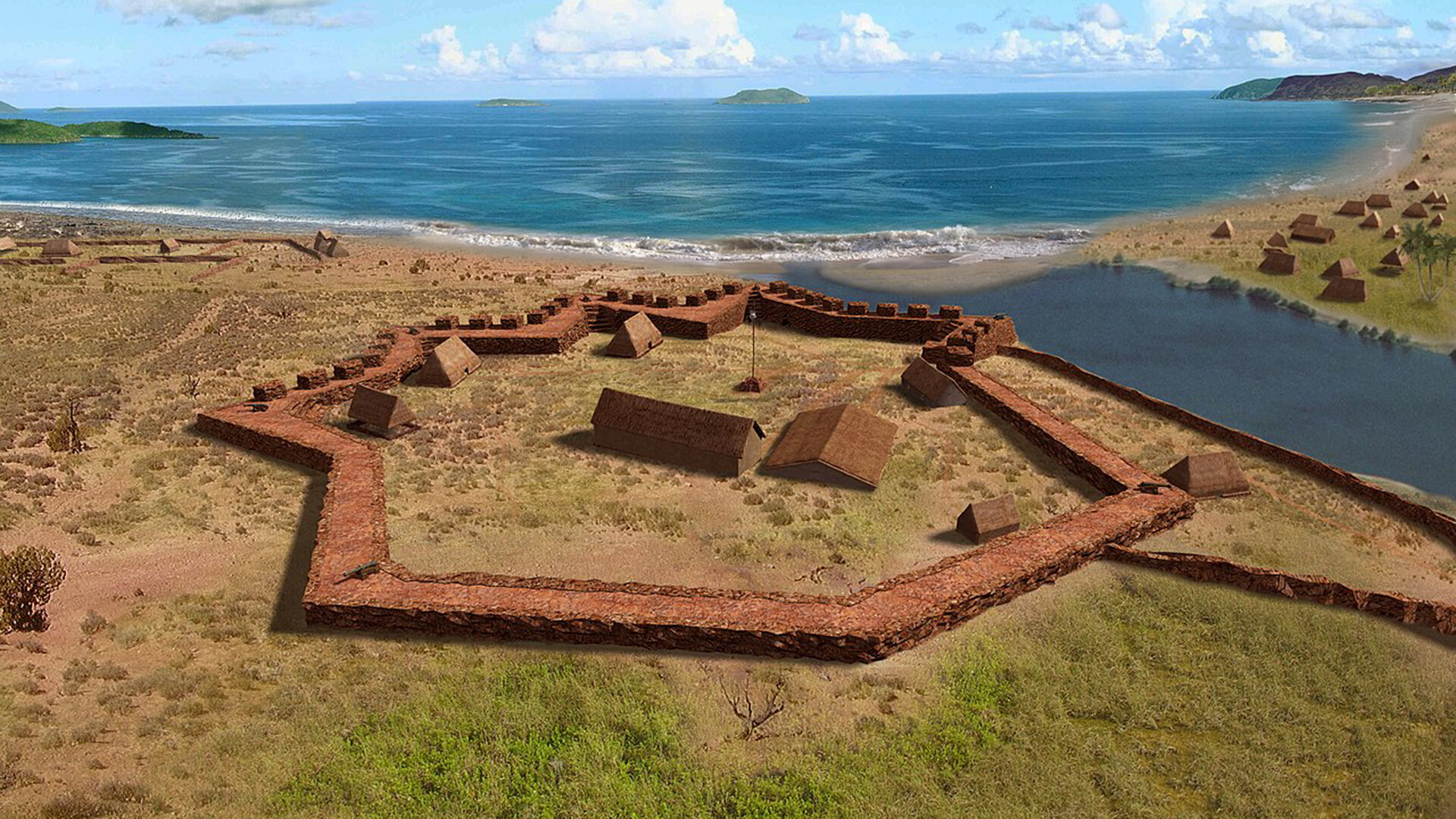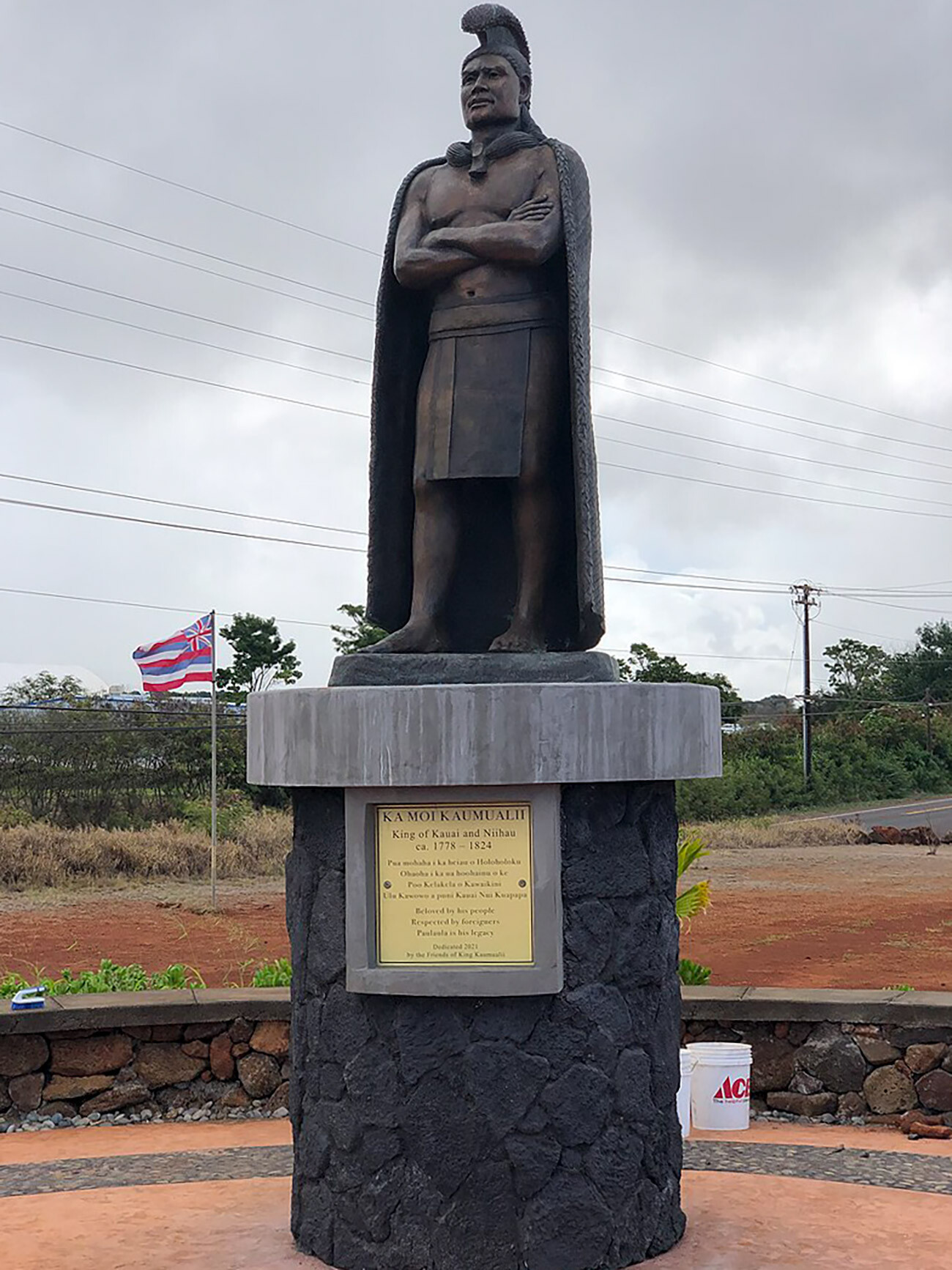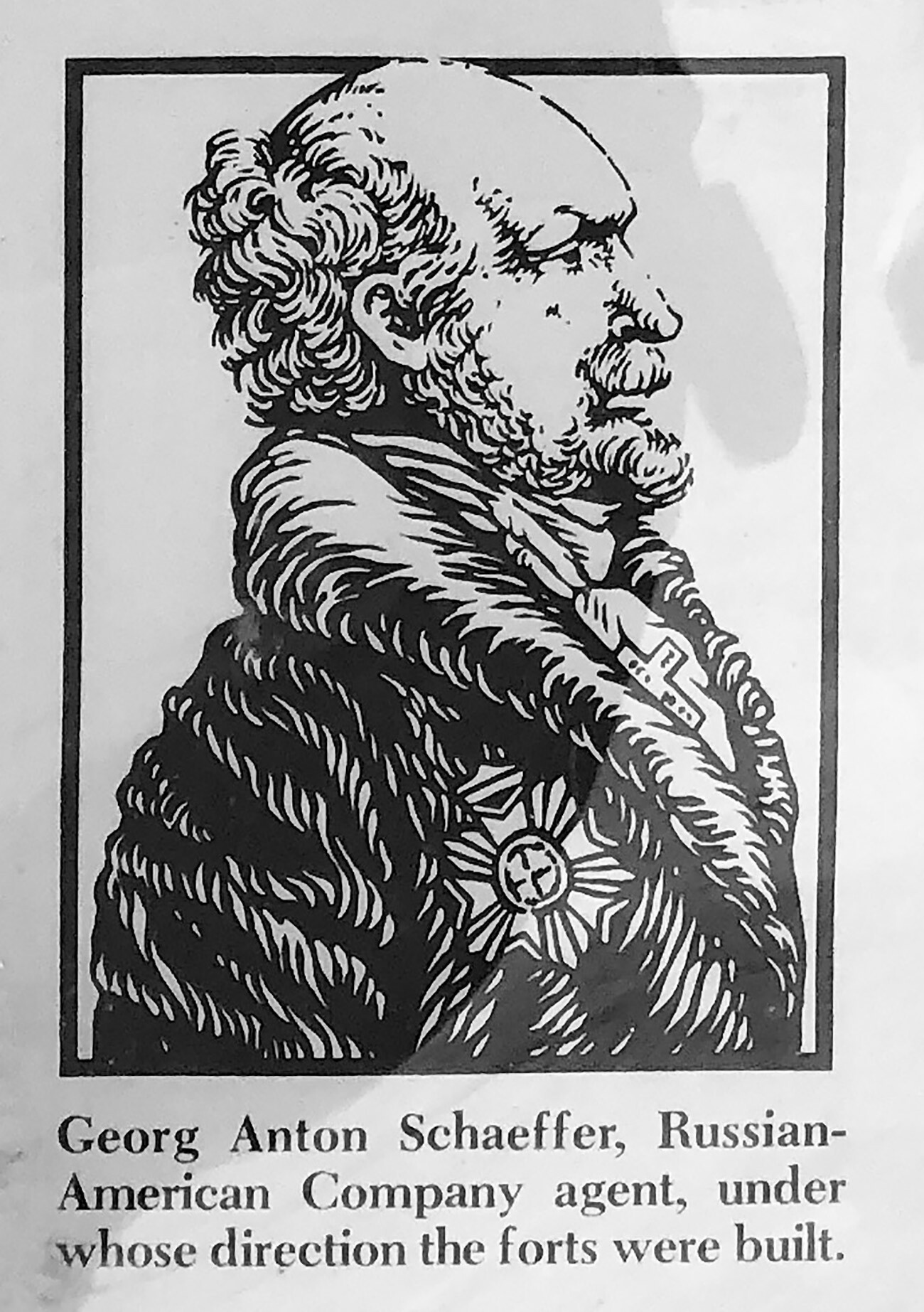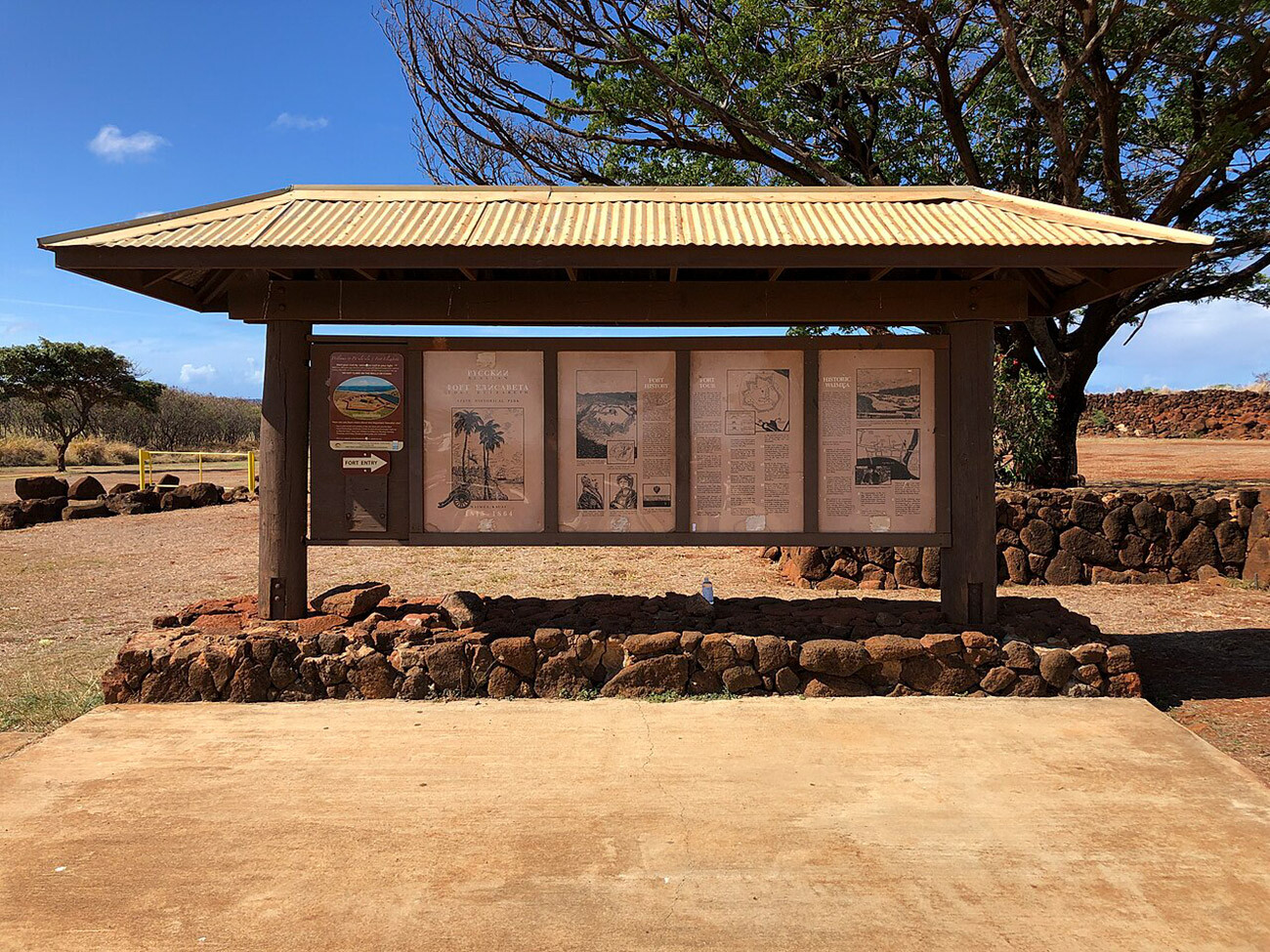
View on the fort Elizabeth (Kauai, Hawaii) from a bird's eye view.
Netlenta (CC BY-SA 4.0)Russians became acquainted with the population of the Pacific Islands in 1804, during the first round-the-world expedition. The sailing boats ‘Nadezhda’ and ‘Neva’ did not stay on the islands for long: they were repaired, replenished their supplies and continued their journey.
At the end of January 1815, the Russian ship ‘Bering’ was wrecked near the Hawaiian island of Kauai. The local ruler Kaumuali'i seized the ship and the expensive cargo on board.

Representation of Kaumualiʻi at Russian Fort Elizabeth State Historical Park in Pakala Village, Kauai, Hawaii.
Famartin (CC BY-SA 4.0)Then, the Russian-American Company, which represented Russia's interests in the Pacific and governed Alaska and the Aleutian Islands, stepped in. Despite the name, there were no U.S. citizens in it.
On the instructions of the head of the company and, at the same time, the chief ruler (governor) of Russian America, Alexander Baranov, his employee, Baron Yegor Schaeffer, arrived in Hawaii. He was supported in negotiations by several warships.

Baron Yegor Schaeffer.
Public DomainKaumuali'i immediately backed down, returned the cargo, allowed Schaeffer to settle on his territory and asked to be under the hand of the Russian tsar. In 1816-1817, the Russians built a stone Elizabethan fortress and two earthen fortifications on the island of Kauai.
Meanwhile, the Americans and British were not at all happy with the presence of Russians on the Hawaiian Islands. They tried to force them out in every possibly way using diplomatic and economic methods and even set the locals against the Russian colony, which led to an armed clash between the Russian garrison and the Hawaiians.

Informational sign pavilion at Russian Fort Elizabeth State Historical Park in Pakala Village, Kauai, Hawaii.
Famartin (CC BY-SA 4.0)When St. Petersburg declared its unwillingness to be drawn into Schaeffer's “adventure” and spoil relations with the Americans, the latter stepped up their pressure. As early as 1817, the Russians finally left Hawaii and, some time later, the archipelago fell completely under U.S. control.
If using any of Russia Beyond's content, partly or in full, always provide an active hyperlink to the original material.
Subscribe
to our newsletter!
Get the week's best stories straight to your inbox